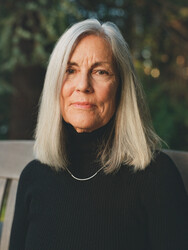Get our latest staff recommendations, award news and digital catalog links right to your inbox.
Searching for Savanna
The Murder of One Native American Woman and the Violence Against the Many
By Mona Gable
Read by Cassandra Campbell
Table of Contents
About The Book
A gripping and illuminating investigation “that is far overdue” (Rachel Louise Snyder, author of No Visible Bruises) into the disappearance of Savanna LaFontaine-Greywind when she was eight months pregnant, highlighting the shocking epidemic of violence against Native American women in America and the societal ramifications of government inaction.
In the summer of 2017, twenty-two-year-old Savanna LaFontaine-Greywind vanished. A week after she disappeared, police arrested the white couple who lived upstairs from Savanna and emerged from their apartment carrying an infant girl. The baby was Savanna’s, but Savanna’s body would not be found for days.
The horrifying crime sent shock waves far beyond Fargo, North Dakota, where it occurred, and helped expose the sexual and physical violence Native American women and girls have endured since the country’s colonization.
With pathos and compassion, Searching for Savanna confronts this history of dehumanization toward Indigenous women and the government’s complicity in the crisis. Featuring in-depth interviews, personal accounts, and trial analysis, this timely book investigates these injustices and the decades-long struggle by Native American advocates for meaningful change.
In the summer of 2017, twenty-two-year-old Savanna LaFontaine-Greywind vanished. A week after she disappeared, police arrested the white couple who lived upstairs from Savanna and emerged from their apartment carrying an infant girl. The baby was Savanna’s, but Savanna’s body would not be found for days.
The horrifying crime sent shock waves far beyond Fargo, North Dakota, where it occurred, and helped expose the sexual and physical violence Native American women and girls have endured since the country’s colonization.
With pathos and compassion, Searching for Savanna confronts this history of dehumanization toward Indigenous women and the government’s complicity in the crisis. Featuring in-depth interviews, personal accounts, and trial analysis, this timely book investigates these injustices and the decades-long struggle by Native American advocates for meaningful change.
About The Reader
Product Details
- Publisher: Simon & Schuster Audio (April 25, 2023)
- Runtime: 9 hours and 38 minutes
- ISBN13: 9781797157238
Browse Related Books
Resources and Downloads
High Resolution Images
- Book Cover Image (jpg): Searching for Savanna Unabridged Audio Download 9781797157238
- Author Photo (jpg): Mona Gable Photograph by Neal Handloser(0.1 MB)
Any use of an author photo must include its respective photo credit


















